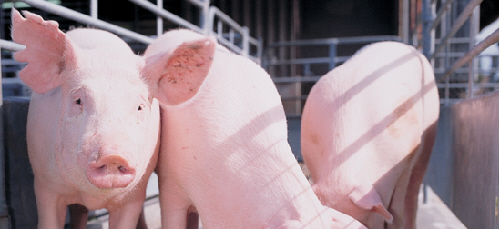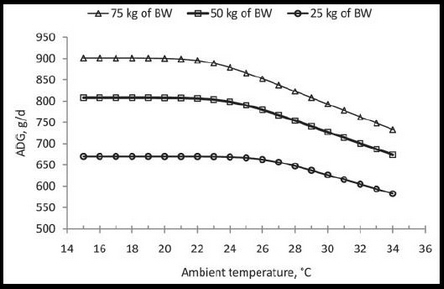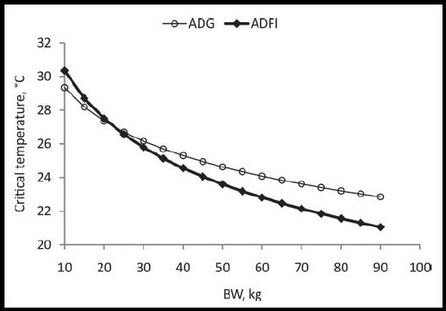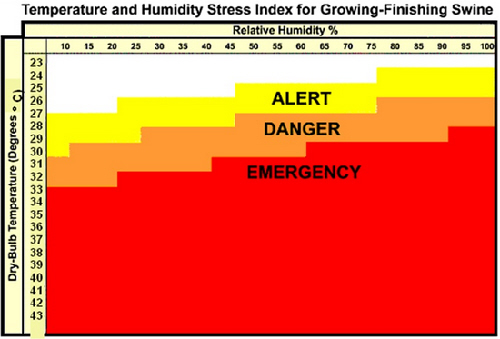



Heat Stress in Pigs
Pigs are much more sensitive to heat than other animals so during periods of hot weather it is important to look at ways to reduce heat stress. This report, from the Department of Agriculture and Food of the Government of Western Australia, contains a warning from an American study and outlines what steps you can take to minimise heat stress in pigs.Today’s modern pig genotypes produce considerably more heat than their predecessors. A review of pig heat and moisture production by Brown-Brandl et al. (2003) suggested that new genetic lines of pigs produce nearly 20 per cent more heat than their counterparts in the early 1980s. This trend is likely to have continued in the 10 years since this review was conducted and heat production could be a further 10 per cent higher again.
In this article, the authors share some useful tools to determine when pigs become heat stressed and also provide recommendations to minimise production losses as a result of heat stress.

Why are pigs so sensitive to heat stress?
Most animals can transfer internal heat to the outside of the body by sweating and panting – these are the two most important tools for the maintenance of body temperature and form their inbuilt evaporative cooling system.
However, pigs do not sweat and have relatively small lungs. Due to these physiological limitations and their relatively thick subcutaneous fat, pigs are prone to heat stress. The two obvious symptoms observed when pigs are exposed to heat stress are increased respiration rate and loss of appetite. The latter reduces internal heat production.
If heat stress continues, pigs start to drink excessive amounts of water (increasing loss of electrolyte) and accumulate acids produced within the body (causing a loss of acid/base balance). This may eventually result in diarrhoea or death in severe cases.
What does current research say about heat stress?
A recent publication by Pearce et al. (2013) examined what happened to the intestinal structure when pigs were exposed to heat stress. The research showed that exposure to 35°C for 24 hours significantly damaged the intestinal defence function and also increased plasma endotoxin levels. The authors explained that when pigs are exposed to heat stress (even for as little as two to six hours) their intestinal defence systems are significantly compromised and this provides opportunity for infection as pathogenic bacteria can invade the body more easily.
Therefore, heat stress can create secondary infection if sanitary conditions are poor.
Consequences of heat stress on the performance of pigs
Bigger pigs are more prone to heat stress and the reduction in growth performance is greater than for smaller pigs. Figure 1 shows the magnitude of performance loss in 25, 50 and 75kg pigs when ambient temperature was increased from 14°C to 35°C. Average daily gain (ADG) starts decreasing when 75-kg pigs were exposed to temperatures above 23°C, while for 25-kg pigs, ADG starts to decrease when exposed to temperatures above 27°C.

Figure 2 shows critical temperatures at various body weights - this information can be used as an index for the temperature management of different sheds housing varying age groups of pigs.

At what temperature and humidity do pigs get heat stressed?
Ambient temperature (as well as humidity) contributes to heat stress and pigs generally develop heat stress at much lower temperatures when the humidity is high. Iowa State University recently released a heat stress index chart (Figure 3) which can be used as a decision tool for implementation of management strategies to reduce heat stress.
The chart shows that an average humidity of 30 per cent coupled with temperatures higher than 28°C will significantly affect intestinal health and performance of grower-finisher pigs (conditions regularly experienced during a Western Australian summer). The temperature tolerance is lower for breeding herds.

Recommended management tools to reduce heat stress
- Increase ventilation and airflow and regularly check cooling system is in good working order, e.g. spray cooling.
- Reduce stocking density if possible.
- Maintain drinking water temperature as low as possible - around 10°C is ideal but difficult to achieve.
- Avoid feeding between 10.00am and 4.00pm - the hottest period of the day.
- Supplement electrolytes and antioxidants through the water supply.
- Increase dietary energy density.
- Minimise excess non-essential amino acids and fibre (minimising intestinal fermentation and therefore heat production).
- Increase availability of antioxidants through the diet such as vitamin E and betaine.
July 2014








